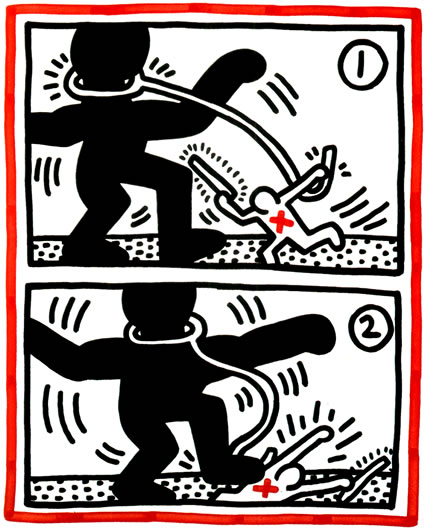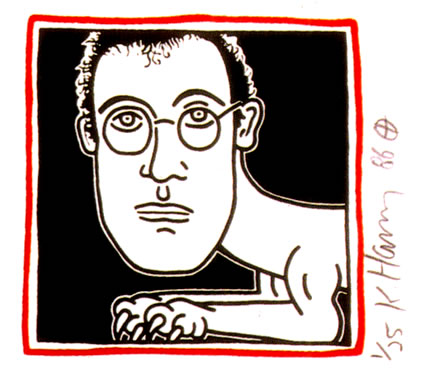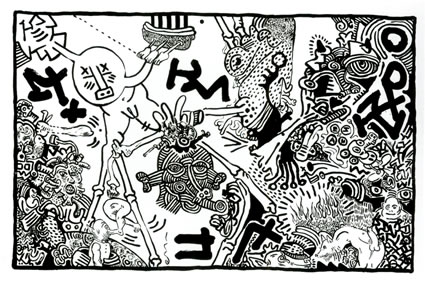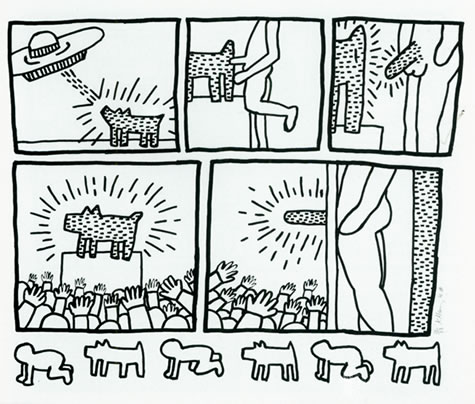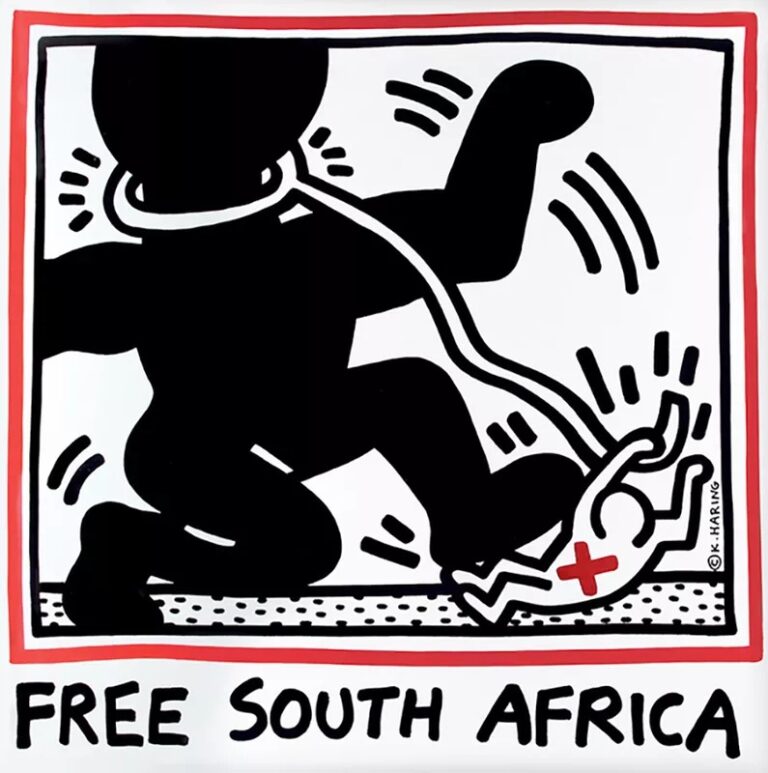Free South Africa 3, a captivating lithograph on paper, emerges as iconic American Pop artist Keith Haring’s resolute response to the enduring battle against apartheid. Even posthumously, Keith Haring’s impactful legacy persists, extending to his unwavering activism that encompassed issues ranging from drugs and the AIDS crisis to politics, digital media, and apartheid. The strict racial segregation laws enforced in South Africa from 1948 to 1994 subjected non-white South Africans to entrenched economic, social, and educational disparities, as they grappled with systemic injustices and state-sanctioned abuses.
Within the evocative Free South Africa series, a visual narrative unfurls, encapsulating the essence of Haring’s belief in art as a catalyst for activism and standing as a testament to his ability to kindle optimism and ignite hope for a future defined by freedom and equality.
The style of Free South Africa 3 accentuates the tension and dynamic energy of the struggle of apartheid and the domineering influence of the white minority in power on the non-white majority population, indicated by the large, shadowy figure and the smaller, white figure marked “X”, respectively. Free South Africa 3 bears a uniqueness in its inclusion of two panels to create the illusion of a picture book, telling a sequential story. In both panels, Haring’s signature bold, sweeping lines convey an intensity, as the two figures seem locked in a gripping battle for power and justice. The visual juxtaposition highlights the inherent power imbalance and the tireless resilience of those fighting against systemic abuses.
Through his distinctive talent to convey with simplicity complex and universally understood stories, Haring creates the feeling of imbalance, violence, and fear in the first panel with gestural markings that indicate a threat from the white figure. Accentuated with a lunge and an attention-grabbing utensil in its hand, it is made clear that the white figure is actively attacking the already constrained population. Yet, Haring imbues the piece with hope and empowering encouragement for the oppressed population, which he so securely believed that with strength and unity, could alter the future of South Africa for the better.
In the second panel, Haring plays out his dream, and the force of the composition is carried by the large figure, now appearing stable and intentional as it crushes its oppressor and physically frees itself from the white figure’s discriminatory mechanisms. Although the apartheid system was abolished in 1994, Free South Africa 3 presents the ongoing quest for freedom and justice. It stands as a stark reminder of the oppressive realities endured by many and a resounding call to action, urging viewers to confront and dismantle the systems that perpetuate inequality. This artwork becomes a powerful testament to the resilience, courage, and collective aspirations of those who fought for a free and egalitarian South Africa.

